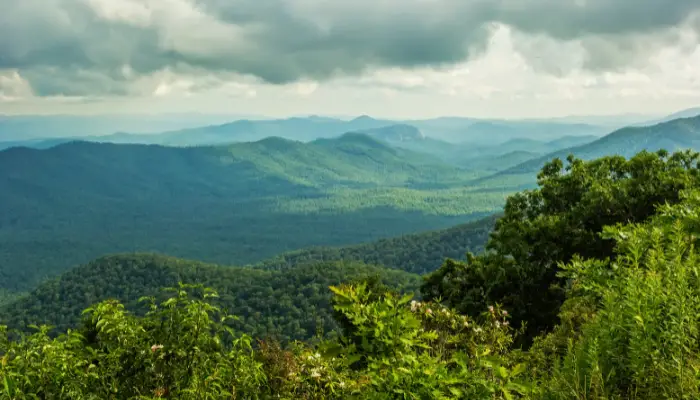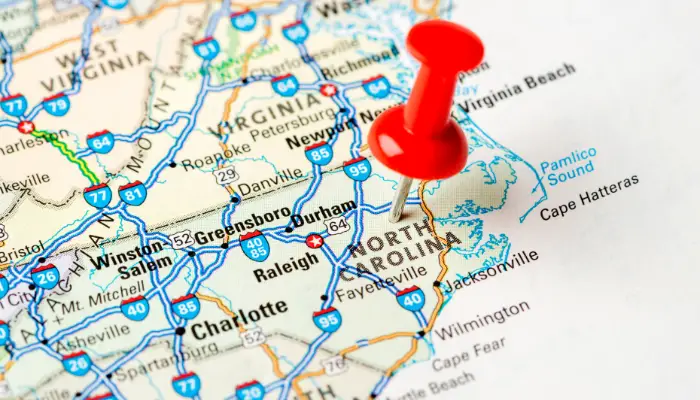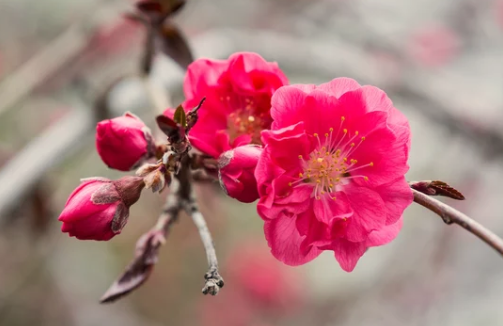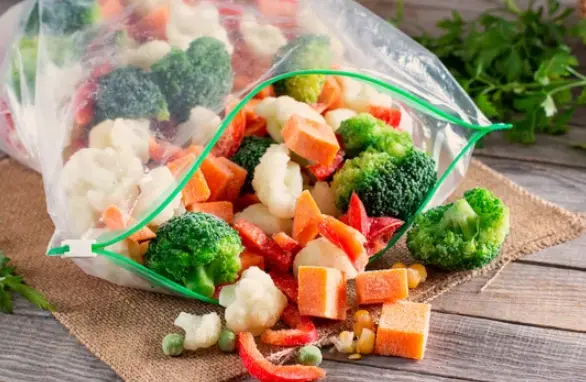How to Choose the Right Plants for Your North Carolina Garden
If you are a gardener in North Carolina, you know that the state has a diverse climate that ranges from the cool mountains to the warm coast. Depending on where you live, you may face different challenges and opportunities when it comes to growing plants. That’s why it is important to know your garden zone, which is a measure of the average minimum winter temperature in your area.
The United States Department of Agriculture (USDA) has divided the country into 13 hardiness zones, from 1a (the coldest) to 13b (the warmest). Each zone is further subdivided into a and b sections, with a being slightly colder than b. The USDA has also created a map that shows the zones for each state and county.

North Carolina encompasses four hardiness zones: 5, 6, 7, and 8. The eastern part of the state, amid the Great Smoky Mountains, is mostly Zone 6, with Zone 5b at higher elevations. The central part of the state is Zone 7, and the coastal regions are Zone 8.
Knowing your zone can help you choose the right plants for your garden, as different plants have different cold tolerance levels. For example, some plants can survive temperatures as low as -20°F, while others may die at 32°F. The USDA has assigned each plant a zone rating, which indicates the coldest zone where it can grow. You can find this information on plant labels, catalogs, or online databases.
To ensure the success of your garden, you should select plants that match or are lower than your zone. For example, if you live in Zone 7, you can grow plants rated for zones 7, 6, 5, 4, 3, 2, or 1. However, it would help if you avoided plants that are rated for zones 8, 9, 10, 11, 12, or 13, as they may not survive the winter in your area.
Of course, other factors affect plant growth, such as soil, water, sunlight, pests, diseases, and microclimates. Therefore, you should also consider these aspects when choosing and caring for your plants. However, knowing your zone is a good starting point for planning your garden and selecting the best plants for your climate.
If you are unsure what your zone is, you can use the USDA’s online tool to find it by entering your zip code. You can also refer to the USDA’s map to see the zones for the whole state. Once you know your zone, you can start browsing for plants that suit your garden and enjoy the beauty and bounty of nature.
What are some popular plants in North Carolina?
Some popular plants in North Carolina are hydrangeas, azaleas, dogwoods, redbuds, and butterfly weeds. These plants are native to the state and can tolerate its diverse climate and soil conditions. They also produce beautiful flowers that attract pollinators and wildlife.
How to Choose the Right Plants For Your Zone
Choosing the right plants for your zone is important for the success of your garden. Different plants have different cold tolerance levels, which are indicated by their hardiness zone rating. The USDA has divided the country into 13 hardiness zones, based on the average minimum winter temperature in each area. You can find your zone by entering your zip code on the USDA’s online tool or by viewing the USDA’s map. Once you know your zone, you should select plants that match or are lower than your zone. For example, if you live in Zone 7, you can grow plants rated for zones 7, 6, 5, 4, 3, 2, or 1. However, you should avoid plants that are rated for zones 8, 9, 10, 11, 12, or 13, as they may not survive the winter in your area. You should also consider other factors that affect plant growth, such as soil, water, sunlight, pests, diseases, and microclimates.
How to Use the USDA’s Online Tool and Map to Find Your Zone

The USDA’s online tool and map are useful resources for finding your hardiness zone, which is a measure of the average minimum winter temperature in your area. To use the tool, you can follow these steps:
- Enter your ZIP code in the search bar and click enter. The tool will show you your zone number and letter, as well as the corresponding color on the map. For example, if you enter 27514, you will see that your zone is 7b, which is light green on the map.
- Alternatively, you can press the “Use My Location” button and allow the tool to use GPS to determine your location. The tool will show you the same information as above.
- You can also use your mouse or touchscreen to drag and zoom the map and find your location manually. Then, you can click or tap the map to see your zone number and letter, as well as the average annual extreme minimum winter temperature for your location.
Plants That Can Grow in Multiple Zones
Some plants that can grow in multiple zones are those that have a wide range of cold hardiness and heat tolerance. These plants can adapt to different climates and survive both frost and drought. Some examples of such plants are:
Lavender (Lavandula):
This fragrant herb can grow in zones 5 to 9 and prefers full sun and well-drained soil. It has purple, pink, or white flowers that attract bees and butterflies.
Daylily (Hemerocallis):
This perennial flower can grow in zones 3 to 9 and blooms in various colors and shapes. It can tolerate a variety of soil and light conditions and is easy to care for.
Hosta (Hosta):
This shade-loving plant can grow in zones 3 to 9 and has large, colorful leaves that add texture and interest to the garden. It also produces spikes of white or purple flowers in summer.
Sedum (Sedum spp.):
This succulent plant can grow in zones 3 to 11 and thrives in sunny and dry locations. It has fleshy, green, red, or yellow leaves and clusters of star-shaped flowers in late summer or fall.
Yarrow (Achillea millefolium):
This hardy plant can grow in zones 3 to 9 and has fern-like foliage and flat-topped flowers in white, yellow, pink, or red. It is drought-tolerant and attracts beneficial insects.








